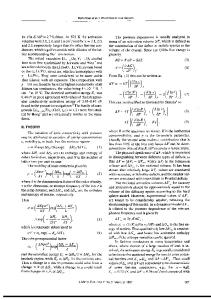Fast Proton Conductors from Inorganic-Organic Composites: I. Amorphous Phosphate-Nafion and Silicophosphate-PMA/PWA Hybr
- PDF / 1,958,255 Bytes
- 6 Pages / 417.6 x 639 pts Page_size
- 21 Downloads / 320 Views
ABSTRACT A drastic increase of electrical conductivity was observed in the composite of amorphous phosphate and ion-exchange resins (Nafion) as phosphorus concentration increased. Incorporation of amorphous phosphate into Nafion caused a large increase of conductivity to about 4xl0'S/cm at 23'C. However, the fabricated composite showed very low chemical stability. A high proton conductivity was also observed in a new inorganic-organic hybrids through incorporating PMA(molibdo-phosphoric acid)/PWA(tungsto-phosphoric acid) as a proton source in amorphous silicophosphate gel structure. Obtained gels were homogeneous and chemically stable. Resulting proton conductivity is very high (up to 5.5x10 3S/cm) compared to those of silicophosphate gels.
INTRODUCTION Nowadays, environmental conservation and new energy development have become serious issues for human beings. As the most practical fuel cell candidate, solid polymer electrolyte fuel cells (PEFCs) are receiving attention. Non-production of CO 2 and suitability for electric vehicles are advantages of PEFCs. The polymer electrolyte membrane (PEM) in PEFC is an electronic insulator but an excellent conductor of hydrogen ions. The PEM is used in the form of 50rm-200im-thick membrane and works as a gas separator and also as an electrolyte. The electrolyte and electrodes are pressed together to produce a single membraneelectrode assembly (MEA). Therefore, electrolyte material in PEFC needs to have : (1) high specific conductivity, (2) good mechanical, chemical stability, and (3) low cost (
Data Loading...











